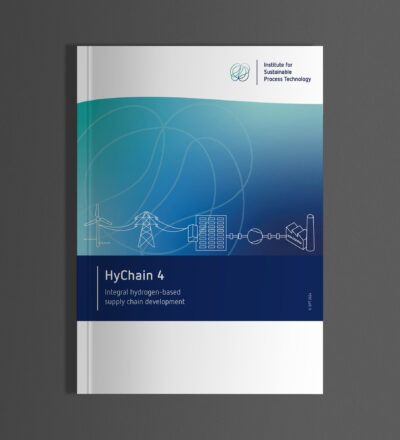The transition towards a hydrogen-based industrial economy faces significant hurdles, notably in establishing a reliable and cost-effective hydrogen supply chain. This challenge involves aligning the interests and investments of suppliers, end-users, and the infrastructure that connects them. The HyChain project delivered a robust, mathematical optimization model for industrial investments and infrastructural needs in the Netherlands.
The model was designed to address industrial investments and infrastructure needs across the Netherlands. Developed over a three-year innovation endeavor, this model sheds light on the dynamics influencing the growth of new hydrogen markets. It enables a systematic exploration of transformation pathways, considering the intricate web of stakeholder interdependencies.
Key insights and impact
The application of the HyChain model across multiple case studies with diverse stakeholders – including regional authorities, industry leaders, energy providers, and network operators – has yielded valuable insights.
Among the noteworthy findings are:
- Accelerated GHG Reduction: Targeted GHG emission reduction efforts have demonstrated potential for bringing forward 2030 targets to 2027, with minimal impact on reference case outcomes, largely driven by EU ETS prices.
- Promotion of Green Hydrogen: The Fit-for-55 package has been instrumental in shifting investments towards green hydrogen, at the expense of blue hydrogen, highlighting the role of policy in steering market developments.
- Hydrogen as Feedstock: There’s a significant potential for hydrogen utilization in synfuel and syn-naphtha production, especially in regions like Rotterdam, underscoring the versatility of hydrogen applications.
- Implications of CCS Phase-out: A mandated CCS phase-out by 2045 could diminish the attractiveness of CCS investments, impacting CO2 emissions and overall costs, depending on the region.
- Challenges of Power Grid Reinforcement: Delays in regional power grid upgrades could hinder electrification efforts, pushing for increased hydrogen deployment and affecting CO2 emission reduction targets.
Framework for collaborative decision-making among stakeholders
The HyChain project not only provides a tool for understanding and navigating the complexities of hydrogen supply chain development but also establishes a framework for collaborative decision-making among stakeholders. This initiative paves the way for the long-term application of these models in regional strategies, contributing to the national energy policy and infrastructure planning in the Netherlands.
Acknowledgement
HyChain 1, 2 and 3 are co-funded with subsidy from the Topsector Energy by the Ministry of Economic Affairs and Climate Policy. HyChain 4 is co-funded by TKI I&E with the supplementary grant PPS. HyChain 5 is co-funded with a grant from NWO under the ESI-Far System Integration call.
